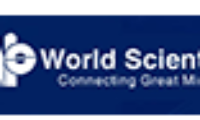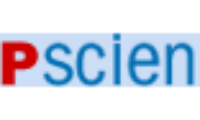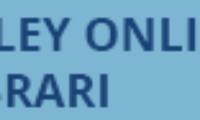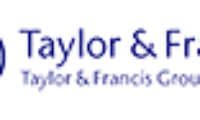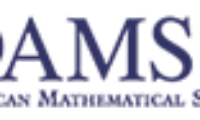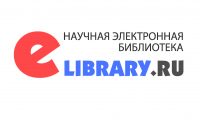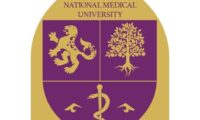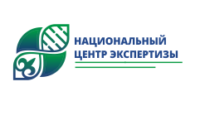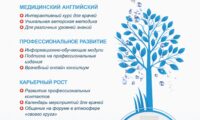Получена: 12/07/2023/ Принята: 26/09/ 2023 / Опубликована online: 30/10/2023
УДК 614.2
DOI 10.53511/PHARMKAZ.2023.81.11.034
А.Р. АБЗАЛИЕВА1, Г.К.КАУСОВА2, М.А. БАЙМУРАТОВА2, Э. ТАСМАГАМБЕТ2
1Казахстанский медицинский университет «Высшая школа общественного
здравоохранения», г. Алматы, Республика Казахстан.
2Казахский Национальный медицинский университет им. С.Д. Асфендиярова, г.Алматы, Республика Казахстан
СОСТОЯНИЕ КАДРОВЫХ РЕСУРСОВ В МИРЕ И РЕСПУБЛИКЕ КАЗАХСТАН
Резюме: Отмечается глобальный дефицит медицинских кадров во всех регионах мира и к 2030 году по прогнозу ВОЗ ситуация только ухудшится
Цель исследования: изучить состояние кадровых ресурсов здравоохранения 9КРЗ в мире и Республике Казахстан (обеспеченность врачами и медсестрами в динамике, демографические изменения в
КРЗ, дефицит КРЗ, миграция, эффективность деятельности)
Материалы и методы. Стратегия поиска. Были изучены статьи, находящиеся в открытом доступе, с использованием следующих баз данных научных публикаций и специализированных поисковых
систем глубиной за последние 10 лет: PubMed, Mendeley, Scopus, Web of Science, Google Scholar.
Критерии включения: Публикации уровня доказательности А, В: мета-анализы, систематические обзоры, когортные и поперечные исследования.
Критерии исключения: мнение экспертов в виде коротких сообщений, рекламные статьи.
Результаты. По запросу было найдено 156 публикаций, критериям включения соответствовали 83
из них. По данным крупных исследований во всем мире отмечается нехватка кадров здравоохранения по сравнению с целевым уровнем для успешного достижения ВОУЗ, несмотря на то, что в целом отмечается их прирост. По прогнозам ВОЗ к 2030 году потребуется более 18 миллионов медицинских кадров, в настоящее время эта цифра составляет 7,2 миллиона человек. В Казахстане
отмечается такая же тенденция нехватки кадровых ресурсов. Основными причинами является низкая оплата труда, эмоциональное выгорание, стрессы, слабая нормативно-правовая защита медицинского персонала, насилие в отношении медицинских работников, миграция, для Казахстана также дополнительно являются устаревшая инфраструктура и медицинское оборудование, недостаток навыков в отношении бизнес-процесса, не покрытие растущих затрат на здравоохранение государственным бюджетом.
Заключение. В целом принимаются меры по расширению образовательного потенциала, финансирования трудоустройства, ориентированность на модель укрепления первичного звена медицинской помощи, а также расширения сферы информационных технологий по сбору и систематизации
данных в отношении кадровых ресурсов для обеспечения более точных прогнозов.
Ключевые слова: кадровые ресурсы здравоохранения, обеспеченность врачами, обеспеченность медсестрами, дефицит медицинских кадров, миграция медицинский кадров
СПИСОК ЛИТЕРАТУРЫ
1 Golz, C., Oulevey Bachmann, A., Defilippis, T.S. et al. Preparing students to deal with the consequences of the workforce shortage among health professionals:
a qualitative approach. BMC Med Educ 22, 756 (2022). https://doi.org/10.1186/s12909-022-03819-4.
2 WHO. State of the world’s nursing 2020: investing in education, jobs and leadership In. World Health organization; 2020.
3 Стратегия развития кадров здравоохранения в Европейском регионе Доклад о состоянии здравоохранений в мире 2006 ВОЗ Женева 2006
4 Перфильева Г.М. Кадровые ресурсы здравоохранения в Европе: проблемы и подходы к решению. – www.mednet.ru/images/stories/files
5 Кашафутдинова, Рамазанова М.А. и соавт. Эффективность деятельности кадровых ресурсов здравоохранения на примере специалистов
сестринского дела. – «Вестник КазНМУ» №4, 2016, С.460-464, ISSN-9965-01-300-4
6 Концепция развития кадров здравоохранения РК на 2012-2020 годы, МЗ и СР РК
7 Европейский план действий по укреплению потенциала и услуг общественного здравоохранения. – ЕРБ ВОЗ, Женева. – 2012.
8 Государственная программа развития здравоохранения РК «Денсаулык» на 2016-2020 годы Кодекс Республики Казахстан от 18 сентября 2009
года № 193-IV «О здоровье народа и системе здравоохранения»
9 Руководство по мониторингу и оценке кадровых ресурсов здравоохранения, адаптированное для применения в странах с низким и средним
уровнем доходов. -ВОЗ, USAID, Всемирный Банк. -2012. -39с.
10 Модели и инструменты планирования и прогнозирования потребности в кадровых ресурсах здравоохранения. Обозреватель состояния КРЗ
выпуск 3. -ВОЗ. -2010. -17с.
11 Оценка будущих потребностей в кадровых ресурсах здравоохранения. – ВОЗ. -2010. -42с.
12 WHO. Global strategy on human resources for health: workforce 2030. In. Geneva: World Health Organization; 2016
13 Задворная О. Л., Алексеев В. А., Борисов К. Н. Развитие профессионально-субъектной позиции управленческих кадров здравоохранения // МИР
(Модернизация. Инновации. Развитие). 2016. Т. 7. № 2. С. 191–197. doi: 10.18184/2079-4665.2016.7.2.191.197
14 O’Brien-Pallas L. Integrating workforce planning, human resources, and service planning // WHO Workshop on Global Health Workforce Strategy: France,
– 2000. – P. 9-14
15 Hansen N., Sverke M., Naswall K. Predicting nurse burnout from demands and resources in three acute care hospitals under different forms of ownership:
a cross-sectional questionnaire survey // Nursing Studies. – 2009- Vol.46, №1.- Р.96–107.
16 Турумбетова, Т.Б. Калиева М.А. Абдрахманова А.О. Методика расчета потребности в медицинских кадрах системы здравоохранения РК //
Методические рекомендации. – Астана: 2013. – С. 13-17
17 Турумбетова, Т.Б., Мусина Г.А. Методы планирования, прогнозирования кадровых ресурсов здравоохранения // Методические рекомендации. –
Астана: 2015. – С. 8-10
18 Бурменко Т.Д., Даниленко Н.Н., Туренко Т.А. -Сфера услуг в современном обществе: Экономика, менеджмент, маркетинг. – доступно на сайте
http://uchebnik-online.com/soderzhanie/textbook
19 WHO The world health report 2000. Health systems: improving performance. https://apps.who.int/iris/handle/10665/42281 Date: 2000 Date accessed:
March 31, 2022
20 WHO Everybody’s business. Strengthening health systems to improve health outcomes: WHO’s framework for action.https://apps.who.int/iris/
handle/10665/43918 Date: 2007 Date accessed: April 28, 2022.
21 Global Health Workforce Alliance WHO A universal truth: no health without a workforce. November, 2013. World Health Organization, Geneva2013
22 Anand S Bärnighausen T Health workers at the core of the health system: framework and research issues.Health Policy. 2012; 105: 185-191
23 GBD 2019 Human Resources for Health Collaborators. Measuring the availability of human resources for health and its relationship to universal health
coverage for 204 countries and territories from 1990 to 2019: a systematic analysis for the Global Burden of Disease Study 2019. Lancet. 2022 Jun
4;399(10341):2129-2154. doi: 10.1016/S0140-6736(22)00532-3. Epub 2022 May 23. PMID: 35617980; PMCID: PMC9168805
24 WHO. State of the world’s nursing 2020: investing in education, jobs and leadership In. World Health organization; 2020
25 WHO/3rdGlobal Forum, www.who.int/workforcealliance/forum/2013/hrh_commitments/en/
26 United Nations, Population Facts Department of Economic and Social Affairs Population Division (2010). No. 2010/2/E/Ref.
27 WHO. State of the world’s nursing 2020: investing in education, jobs and leadership In. World Health organization; 2020 3. Merçay C, Burla L,
Widmer M: Gesundheitspersonal in der Schweiz. Bestandesaufnahme und Prognosen bis 2030 (Obsan Bericht 71). In. Neuchâtel: Schweizerisches
Gesundheitsobservatorium; 2016.
28 Aiken LH, Sloane DM, Bruyneel L, Van den Heede K, Sermeus W. Consortium Rc: Nurses’ reports of working conditions and hospital quality of care in 12
countries in Europe. Int J Nurs Stud. 2013;50(2):143–53.
29 Hämmig O. Explaining burnout and the intention to leave the profession among health professionals–a cross-sectional study in a hospital setting in
Switzerland. BMC Health Serv Res. 2018;18(1):785.
30 Lee YW, Dai YT, Chang MY, Chang YC, Yao KG, Liu MC. Quality of work life, nurses’ intention to leave the profession, and nurses leaving the profession:
A one-year prospective survey. J Nurs Scholarsh. 2017;49(4):438–44.
31 Peter KA, Hahn S, Schols JM, Halfens RJ. Work-related stress among health professionals in Swiss acute care and rehabilitation hospitals–a cross‐
sectional study. Journal of Clinical Nursing 2020.
32 Golz, C., Oulevey Bachmann, A., Defilippis, T.S. et al. Preparing students to deal with the consequences of the workforce shortage among health
professionals: a qualitative approach. BMC Med Educ 22, 756 (2022). https://doi.org/10.1186/s12909-022-03819-4.
33 Dolder P, Grünig A. Nationaler Versorgungsbericht für die Gesundheitsberufe 2016. In: In. Bern: Schweizerische Konferenz der kantonalen
Gesundheitsdirektorinnen und -direktoren (GDK) und Nationale Dachorganisationen der Arbeitswelt Gesundheit. OdASanté); 2016.
34 WHO. Global strategy on human resources for health: workforce 2030. In. Geneva: World Health Organization; 2016.
35 Strategy to Counter Staff Shortage Among Health Professions [www.cnhw. ch].
36 Golz, C., Oulevey Bachmann, A., Defilippis, T.S. et al. Preparing students to deal with the consequences of the workforce shortage among health professionals: a qualitative approach. BMC Med Educ 22, 756 (2022). https://doi.org/10.1186/s12909-022-03819-4.
37 Addor V, Schwendimann R, Gauthier JA, Wernli B, Jäckel D, Paignon A: «nurses at work» – Studie zu den Laufbahnen im Pflegeberuf über die letzten 40
Jahre in der Schweiz. In. Neuchâtel: Schweizerisches Gesundheitsobservatorium; 2016
38 Merga MK. Gaps in work readiness of graduate health professionals and impact on early practice: Possibilities for future interprofessional learning. Focus
on Health Professional Education: A Multi-disciplinary Journal. 2016;17(3):14
39 Burlison JD, Quillivan RR, Scott SD, Johnson S, Hoffman JM. The effects of the second victim phenomenon on work-related outcomes: connecting
selfreported caregiver distress to turnover intentions and absenteeism. J Patient Saf. 2021;17(3):195–9.
40 Wu AW: Medical error: the second victim: the doctor who makes the mistake needs help too. In., vol. 320: British Medical Journal Publishing Group; 2000:
726–727.
41 Scott SD, Hirschinger LE, Cox KR, McCoig M, Brandt J, Hall LW. The natural history of recovery for the healthcare provider “second victim” after adverse
patient events. BMJ Qual Saf. 2009;18(5):325–30.
42 Li Z-S, Hasson F. Resilience, stress, and psychological well-being in nursing students: A systematic review. Nurse Educ Today. 2020;90:104440.
43 Dyrbye LN, Shanafelt TD, Sinsky CA, Cipriano PF, Bhatt J, Ommaya A, West CP, Meyers D. Burnout among health care professionals: a call to explore
and address this underrecognized threat to safe, high-quality care. NAM perspectives 2017.
44 Rudman A, Gustavsson JP. Burnout during nursing education predicts lower occupational preparedness and future clinical performance: a longitudinal
study. Int J Nurs Stud. 2012;49(8):988–1001.
45 Crawford RJ, Volken T, Schaffert R, Bucher T. Higher low back and neck pain in final year Swiss health professions’ students: worrying susceptibilities
identified in a multi-centre comparison to the national population. BMC Public Health. 2018;18(1):1188
46 Bartlett ML, Taylor H, Nelson JD. Comparison of mental health characteristics and stress between baccalaureate nursing students and non-nursing students.
J Nurs Educ. 2016;55(2):87–90.
47 Sasso L, Bagnasco A, Bianchi M, Bressan V, Carnevale F. Moral distress in undergraduate nursing students: A systematic review. Nurs Ethics.
2015;23(5):523–34
48 Huang H, Chen J, Xiao M, Cao S, Zhao Q. Experiences and responses of nursing students as second victims of patient safety incidents in a clinical setting:
A mixed-methods study. J Nurs Adm Manag. 2020;28(6):1317–25
49 Miseda MH, Were SO, Murianki CA, Mutuku MP, Mutwiwa SN. The implication of the shortage of health workforce specialist on universal health coverage
in Kenya. Hum Resour Health. 2017 Dec 1;15(1):80. doi: 10.1186/s12960-017-0253-9. PMID: 29191247; PMCID: PMC5710014
50 V Bhatt, S Giri and S Koiral (2008). Health workforce shortage: a global crisis. The Internet Journal of World Health and Societal Politics Volume 7 Number
1. http://ispub.com/IJWH/7/1/6202
51 Tangcharoensathien V ,Patcharanarumol W ,Ir P et al. Health-financing reforms in southeast Asia: challenges in achieving universal coverage. Lancet.
2011; 377: 863-873
52 Bates I , John C , Bruno A , Fu P , Aliabadi S/ An analysis of the global pharmacy workforce capacity.Hum Resour Health. 2016; 14: 61
53 Drennan VM ,Ross F /Global nurse shortages—the facts, the impact and action for change. Br Med Bull. 2019; 130: 25-37
54 WHO /State of the world’s nursing 2020: investing in education, jobs and leadership.https://www.who.int/publications/i/item/9789240003279 Date: April 6,
2020 Date accessed: March 31, 2022
55 Anand S Bärnighausen T/ Health workers and vaccination coverage in developing countries: an econometric analysis.Lancet. 2007; 369: 1277-1285.
56 Speybroeck N, Kinfu Y, Dal Poz MR , Evans DB/ Reassessing the relationship between human resources for health, intervention coverage and health
outcomes. Background paper prepared for the world health report 2006—working together for health. March, 2006 World Health Organization, Geneva2006]
57 WHO / High-Level Commission on Health Employment and Economic Growth. Final report of the expert group. https://apps.who.int/iris/handle/10665/250040
Date: 2016 Date accessed: April 28, 2022
58 Li L, Xv Q, Yan J. COVID-19: the need for continuous medical education and training. Lancet Respir Med. 2020 Apr;8(4):e23. doi: 10.1016/S2213-
2600(20)30125-9. Epub 2020 Mar 17. PMID: 32192586; PMCID: PMC7104229
59 Anand S, Fan V, World Health Organization. The health workforce in India. World Health Organization; 2016.
60 Basu S, Berkowitz SA, Phillips RL, Bitton A, Landon BE, Phillips RS. Association of Primary Care Physician Supply With Population Mortality in the United
States, 2005-2015. JAMA Intern Med. 2019 Apr 1;179(4):506-514. doi: 10.1001/jamainternmed.2018.7624. PMID: 30776056; PMCID: PMC6450307.
61 Karan A, Negandhi H, Nair R, Sharma A, Tiwari R, Zodpey S. Size, composition and distribution of human resource for health in India: new estimates
using National Sample Survey and Registry data. BMJ Open. 2019 May 27;9(4):e025979. doi: 10.1136/bmjopen-2018-025979. PMID: 31133622; PMCID:
PMC6549895.
62 Petterson S, Phillips RL, Bazemore A, Koinis GT. Unequal distribution of the US primary care workforce. American family physician. 2013 Jun 1;87(11).
63 Zhou K, Zhang X, Ding Y, Wang D, Lu Z, Yu M. Inequality trends of health workforce in different stages of medical system reform (1985-2011) in China.
Hum Resour Health. 2015 Dec 8;13:94. doi: 10.1186/s12960-015-0089-0. PMID: 26645960; PMCID: PMC4673776
64 World Health Organization. WHO Global Health Workforce Statistics. 2014 Update. Geneve: World Health Organization. Saatavissa. 2014;30:2016
65 World Health Organization. National Health Workforce Accounts Data Portal.(2022)
66 Tomblin Murphy G, Birch S, MacKenzie A, Bradish S, Elliott Rose A. A synthesis of recent analyses of human resources for health requirements and labour
market dynamics in high-income OECD countries. Hum Resour Health. 2016 Sep 29;14(1):59. doi: 10.1186/s12960-016-0155-2. PMID: 27687611; PMCID:
PMC5043532
67 GBD 2019 Universal Health Coverage Collaborators. Measuring universal health coverage based on an index of effective coverage of health services in
204 countries and territories, 1990-2019: a systematic analysis for the Global Burden of Disease Study 2019. Lancet. 2020 Oct 17;396(10258):1250-1284.
doi: 10.1016/S0140-6736(20)30750-9. Epub 2020 Aug 27. PMID: 32861314; PMCID: PMC7562819
68 Statisticheskij byulleten` Ministerstva finansov RK № 12, 2012–2020 gg. URL: http:// www.minfin.gov.kz/irj/servlet/prt/portal (Accessed 28.07.2021)
69 А.А. Легостаева, Б.К. Джазыкбаева/ Кадровая политика в системе здравоохранения Казахстана/ Вестник Российского университета кооперации.
2021. № 3(45)/ DOI: https://doi.org/10.52623/2227-4383-3-45-6
70 Kharin A, Koichubekov B, Omarkulov B, Sorokina M, Korshukov I, Omarbekova N. First steps in forecasting the health workforce in Kazakhstan: A baseline
scenario. J CLIN MED KAZ. 2021;18(3):40-5. https://doi.org/10.23950/jcmk/10980
71 Smith SD. The global workforce shortages and the migration of medical professions: the Australian policy response. Aust New Zealand Health Policy. 2008
May 29;5:7. doi: 10.1186/1743-8462-5-7. PMID: 18507867; PMCID: PMC2413249
72 Belita A, Mbindyo P, English M. Absenteeism amongst health workers–developing a typology to support empiric work in low-income countries and
characterizing reported associations. Hum Resour Health. 2013 Jul 17;11:34. doi: 10.1186/1478-4491-11-34. PMID: 23866770; PMCID: PMC3721994.
73 Al-Khalisi N. The Iraqi medical brain drain: a cross-sectional study. Int J Health Serv. 2013;43(2):363-78. doi: 10.2190/HS.43.2.j. PMID: 23821910.]
74 Nowrouzi-Kia B, Chai E, Usuba K, Nowrouzi-Kia B, Casole J. Prevalence of Type II and Type III Workplace Violence against Physicians: A Systematic
Review and Meta-analysis. Int J Occup Environ Med. 2019 Jul;10(3):99-110. doi: 10.15171/ijoem.2019.1573. PMID: 31325293; PMCID: PMC6708400.
75 Ferri P, Silvestri M, Artoni C, Di Lorenzo R. Workplace violence in different settings and among various health professionals in an Italian general hospital: a
cross-sectional study. Psychol Res Behav Manag. 2016 Sep 23;9:263-275. doi: 10.2147/PRBM.S114870. PMID: 27729818; PMCID: PMC5042196.
76 Liu JX, Goryakin Y, Maeda A, Bruckner T, Scheffler R. Global Health Workforce Labor Market Projections for 2030. Hum Resour Health. 2017 Feb 3;15(1):11.
doi: 10.1186/s12960-017-0187-2. Erratum in: Hum Resour Health. 2017 Feb 20;15(1):18. PMID: 28159017; PMCID: PMC5291995
77 Sousa A, Scheffler RM, Nyoni J, Boerma T. A comprehensive health labour market framework for universal health coverage. Bull World Health Organ.
2013 Nov 1;91(11):892-4. doi: 10.2471/BLT.13.118927. Erratum in: Bull World Health Organ. 2014 Mar 1;92(3):228. PMID: 24347720; PMCID: PMC3853957
78 Langer A, Meleis A, Knaul FM, Atun R, Aran M, Arreola-Ornelas H, Bhutta ZA, Binagwaho A, Bonita R, Caglia JM, Claeson M, Davies J, Donnay FA Gausman JM, Glickman C, Kearns AD, Kendall T, Lozano R, Seboni N, Sen G, Sindhu S, Temin M, Frenk J. Women and Health: the key for sustainable
development. Lancet. 2015 Sep 19;386(9999):1165-210. doi: 10.1016/S0140-6736(15)60497-4. Epub 2015 Jun 4. PMID: 26051370
79 Langer A, Meleis A, Knaul FM, Atun R, Aran M, Arreola-Ornelas H, Bhutta ZA, Binagwaho A, Bonita R, Caglia JM, Claeson M, Davies J, Donnay FA,
Gausman JM, Glickman C, Kearns AD, Kendall T, Lozano R, Seboni N, Sen G, Sindhu S, Temin M, Frenk J. Women and Health: the key for sustainable
development. Lancet. 2015 Sep 19;386(9999):1165-210. doi: 10.1016/S0140-6736(15)60497-4. Epub 2015 Jun 4. PMID: 26051370
80 Wenham C, Katz R, Birungi C, Boden L, Eccleston-Turner M, Gostin L, Guinto R, Hellowell M, Onarheim KH, Hutton J, Kapilashrami A, Mendenhall E,
Phelan A, Tichenor M, Sridhar D. Global health security and universal health coverage: from a marriage of convenience to a strategic, effective partnership.
BMJ Glob Health. 2019 Jan 13;4(1):e001145. doi: 10.1136/bmjgh-2018-001145. PMID: 30713747; PMCID: PMC6340060
81 McPake B, Dayal P, Herbst CH. Never again? Challenges in transforming the health workforce landscape in post-Ebola West Africa. Hum Resour Health.
2019 Mar 7;17(1):19. doi: 10.1186/s12960-019-0351-y. PMID: 30845978; PMCID: PMC6407225
82 Bhaumik S, Moola S, Tyagi J, Nambiar D, Kakoti M. Community health workers for pandemic response: a rapid evidence synthesis. BMJ Global Health.
2020 Jun 1;5(6):e002769
83 Global Burden of Disease Health Financing Collaborator Network. Past, present, and future of global health financing: a review of development assistance,
government, out-of-pocket, and other private spending on health for 195 countries, 1995-2050. Lancet. 2019 Jun 1;393(10187):2233-2260. doi: 10.1016/S0140-
6736(19)30841-4. Epub 2019 Apr 25. Erratum in: Lancet. 2021 Sep 11;398(10304):956. PMID: 31030984; PMCID: PMC6548764




















